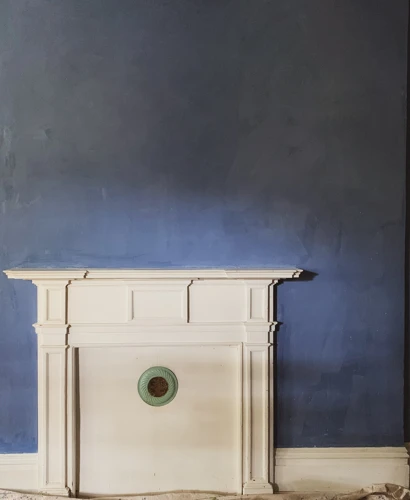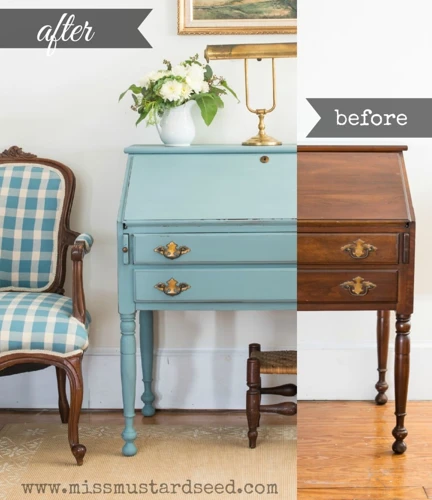Reviving ancient traditions with a modern twist, long lasting milk paint is gaining popularity among those seeking to achieve a balance of beauty, durability, and environmental consciousness in their painting projects. This unique concoction, rooted in a recipe as old as civilization itself, offers an alluring matte finish that is both timeless and robust.
What is Milk Paint?
Milk paint is a non-toxic paint that has been used for centuries, known for its distinctive powdery finish. It’s made from simple ingredients including milk protein (casein), limestone, clay, and natural pigments which give it color. When mixed together, these ingredients create a paint that is renowned for its eco-friendly qualities and its ability to adhere to a variety of surfaces.
Benefits of Using Natural Milk Paint
Choosing natural milk paint means embracing a host of benefits. Its composition is free from harmful chemicals, making it safe for use in any living environment. The paint’s biodegradable nature underscores its appeal for those prioritizing sustainability. Moreover, its versatility allows for application on a wide range of substrates, from wood to drywall, adding to its popularity among DIY enthusiasts and professional painters alike.
Milk Paint Durability: How It Stands the Test of Time
While its natural composition might suggest otherwise, the milk paint durability is remarkable. Properly applied and sealed, milk paint can withstand the rigors of time, often outlasting its synthetic counterparts.
Factors Contributing to Milk Paint Durability
- Chemical Reaction: The casein in milk paint reacts with the lime to create a durable, long-lasting bond.
- Porosity: The porous nature of milk paint allows it to breathe, preventing blistering and peeling.
- Flexibility: Unlike some paints that become brittle over time, milk paint retains a degree of flexibility that accommodates the natural movement of wood.
Comparing Long Lasting Milk Paint to Other Paint Types
When placed side by side with other paint varieties, milk paint stands out for its eco-conscious profile and enduring finish. Acrylic and latex paints, while easy to use, often contain volatile organic compounds (VOCs) and can peel or chip over time. Oil-based paints, known for their toughness, come with a heavy environmental toll. Milk paint, conversely, offers a compromise that is both tough and tender on the planet.
Eco-Friendly Paint: The Environmental Benefits of Milk Paint
In a world increasingly aware of the importance of sustainability, eco-friendly paint options have become essential. Milk paint is at the forefront of this green revolution, offering a solution that doesn’t sacrifice quality for eco-friendliness.
Safe Ingredients in Natural Milk Paint
The ingredients in natural milk paint are non-toxic and biodegradable, which means they break down naturally without releasing harmful chemicals into the environment. Its safe formulation is ideal for homes, furniture, and toys, ensuring a healthier living space.
Reducing Your Carbon Footprint with Eco-Friendly Paint
Using eco-friendly paint like milk paint can significantly reduce your carbon footprint. Its manufacturing process is less energy-intensive compared to conventional paints, and because it’s a powder until mixed, it reduces the carbon cost of shipping. By choosing milk paint, you’re not only selecting a high-quality product but also contributing to a healthier planet.
Enhancing Milk Paint Finishes for Durability and Aesthetics
To fully reap the benefits of milk paint, understanding how to enhance its natural beauty while ensuring its longevity is key. Several techniques can be employed to protect and preserve milk paint finishes.
Sealing and Protecting with Milk Paint Finishes
Applying a topcoat over milk paint finishes can protect from water damage and wear, sealing the paint and making it more durable. Options include wax, hemp oil, and commercial sealants, each providing a different sheen and level of protection.
Waterproof Milk Paint Solutions
For areas exposed to moisture, waterproof milk paint solutions are available. These specialized sealants can ensure that the paint remains intact in kitchens, bathrooms, and outdoor settings, safeguarding the charm of the milk paint finish.
Creating the Antique Milk Paint Look
The antique milk paint look is coveted for its vintage charm and character. Achieving this aesthetic can be a delightful journey into the past, bringing with it an aura of authenticity and timelessness.
Achieving a Time-Worn Aesthetic
For those desiring a piece that tells a story, the key is in the details. Strategic sanding, layering of colors, and the selective removal of paint can simulate years of wear and tear, giving the piece an elegantly aged appearance.
Milk Paint Techniques for an Authentic Antique Finish
Milk paint techniques such as distressing, crackling, and glazing can add depth and history to your project. These methods can be used to accentuate details and create a genuinely antique milk paint look that feels as though it has been passed down through generations.
Applying Milk Paint on Furniture
Transforming furniture with milk paint can be an immensely satisfying process. Whether you’re refreshing a vintage find or customizing a new piece, milk paint furniture projects can yield stunning results.
Preparation and Priming for Milk Paint Furniture
Proper preparation is crucial. Cleaning the surface and possibly sanding it to create a good adhesion surface is important. For some non-porous surfaces, a bonding agent might be necessary to ensure that the paint adheres well to the furniture.
Step-by-Step Milk Paint Application
Milk paint is typically applied in thin layers, allowing each to dry before adding the next. Starting with a base coat, you can build color intensity and coverage with additional coats, finishing with a sealant for protection. The result is a durable, unique finish that can elevate any piece of furniture.
Making Your Own: The Milk Paint Recipe
Crafting your milk paint recipe can be both economical and rewarding, giving you control over the ingredients and the final color of your paint.
Ingredients for Homemade Milk Paint
The basic components of a milk paint recipe include powdered milk, builder’s lime, and pigment. These are readily available and can be mixed to create a variety of hues and shades.
Instructions for Mixing Your Milk Paint Recipe
To mix your own paint, combine the milk powder with water according to the desired consistency, then slowly add the lime and pigment, stirring continuously. The result is a fresh batch of milk paint ready for application.
Caring for Your Milk Painted Surfaces
Once your milk paint project is complete, maintaining its beauty is straightforward with a few simple care strategies.
Maintenance Tips for Long Lasting Milk Paint
Regular cleaning with a damp cloth and mild soap helps maintain the finish. Avoid harsh chemicals that could damage the sealant and the paint underneath. For areas that see heavy use, periodic reapplication of a topcoat may be necessary to preserve the finish.
Repair and Touch-Up Strategies
If the paint becomes chipped or worn, touch-ups are easy. Simply clean the area, apply a fresh coat of paint, and reseal. With these simple repairs, your milk paint surface can continue to look its best for years to come.
Advanced Milk Paint Techniques
For the more adventurous, advanced milk paint techniques can add complexity and individuality to your projects.
Layering and Mixing Colors
Combining different colors in layers or mixing them to create custom shades can result in unique finishes that are truly one-of-a-kind. Experimentation is key, and the results can be spectacular.
Texturizing and Distressing with Milk Paint
Adding texture or distressing with tools like steel wool or sandpaper can give a project character and an antique feel. These techniques can be especially effective when applied strategically to edges and corners where natural wear would occur.
Real-Life Examples of Milk Paint in Action
Seeing is believing when it comes to the potential of milk paint. Real-life examples can provide inspiration and confidence to embark on your own milk paint journey.
Milk Paint Furniture Showcase
From dressers to dining tables, milk paint furniture showcases the versatility and beauty of this finish. Every piece tells a story, whether it’s a bright pop of color in a modern setting or a subtle, aged finish on a period piece.
Before and After Transformations
The transformative power of milk paint is most evident in before and after showcases. Items that were once dated or damaged can be revitalized, their beauty and utility restored through the application of milk paint.
Conclusion: The Future of Milk Paint in Home Decor
The renaissance of milk paint in home decor speaks to a growing desire for products that are not only aesthetically pleasing but also environmentally responsible and health-conscious.
Why Choose Long Lasting Milk Paint for Your Next Project
For its unmatched blend of durability, safety, and beauty, long lasting milk paint is an excellent choice for your next project. It’s a testament to the enduring appeal of natural ingredients and traditional methods in our modern world.
If you’re an avid DIY enthusiast or a professional furniture restorer, you’ll appreciate the beauty and durability of milk paint. For those interested in achieving a flawless finish with this natural paint, understanding the process is key. Start by learning how long glue takes to dry as it can be an essential step in prepping your furniture. To add a touch of sophistication to your project, you might want to explore techniques for creating a wood grain effect with paint. And for the main event, our guide on how to mix milk paint for furniture will help you get that long-lasting, beautiful finish you’re aiming for.
Expanding the Possibilities with Milk Paint
As we look forward, the possibilities with milk paint seem boundless. With advancements in formulations and a growing community of artisans and DIY enthusiasts, milk paint is set to continue its legacy as a beloved finish for all who value heritage, quality, and sustainability in their decor.

